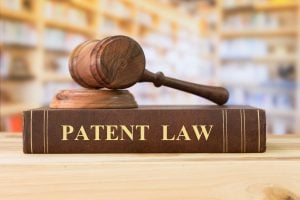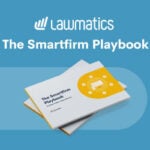The Billions Boost … Into Reverse?
A look at the potential consequences of the Federal Circuit’s reversal of VLSI’s $2 billion March 2021 WDTX verdict against Intel.
 For all its frustrations, perhaps chief among them the length of time everything takes, patent litigation remains one of the most interesting areas of law to follow. Last week, I took a hard look at the impact of a nuisance-value approach to settling patent cases, in the context of a blockbuster decision issued by one of the nation’s leading patent jurists. This week, I flip to the opposite end of the damages spectrum with a look at the potential consequences of the Federal Circuit’s reversal of VLSI’s $2 billion March 2021 WDTX verdict against Intel. That verdict was based on infringement of two patents asserted by VLSI in a 2019 WDTX complaint, one of the 81 cases listed on Docket Navigator involving these two parties when you take into account Intel’s own IPRs and filings by third-parties challenging VLSI’s patents. If there is one guarantee from the Federal Circuit’s opinion, it is that the parties have the option of continuing to litigate each other for years to come, unless the deadlock can be broken by some kind of settlement somewhere along the way.
For all its frustrations, perhaps chief among them the length of time everything takes, patent litigation remains one of the most interesting areas of law to follow. Last week, I took a hard look at the impact of a nuisance-value approach to settling patent cases, in the context of a blockbuster decision issued by one of the nation’s leading patent jurists. This week, I flip to the opposite end of the damages spectrum with a look at the potential consequences of the Federal Circuit’s reversal of VLSI’s $2 billion March 2021 WDTX verdict against Intel. That verdict was based on infringement of two patents asserted by VLSI in a 2019 WDTX complaint, one of the 81 cases listed on Docket Navigator involving these two parties when you take into account Intel’s own IPRs and filings by third-parties challenging VLSI’s patents. If there is one guarantee from the Federal Circuit’s opinion, it is that the parties have the option of continuing to litigate each other for years to come, unless the deadlock can be broken by some kind of settlement somewhere along the way.
Before we get into the substance of the Federal Circuit’s opinion, I happened to take a look at the column I wrote on these pages in the wake of the original mega-verdict obtained by VLSI back in 2021. There, I mentioned “three immediate takeaways” from the verdict, which took the form of three predictions. Each of those three predictions hit the mark. First, I predicted that NPE’s utilizing patents sourced from established technology companies would continue to see success before juries. Even a cursory look at some of the post-VLSI verdicts has borne that out. Second, I said that the buzz around the VLSI verdict would increase demand for litigation funding in the patent space — another easily verified development. Lastly, I predicted an increased enthusiasm amongst patentees for the WDTX. On that one I will only give myself half-credit; even though WDTX remains a popular venue, there were a few curveballs (e.g., the WDTX Judge Reassignment Order of July 2022, that led to continued interest in the EDTX as an alternative preferred venue for patent owners). Still, in total, the impact of the first VLSI trial mega-verdict has been easy to see. Post-Federal Circuit, however, clarity may be a little harder to achieve.
To understand why, let me recap what the Federal Circuit did. First, the panel affirmed the finding of infringement of VLSI’s ‘373 patent, while also throwing out the finding of infringement under the doctrine of equivalents for the ‘759 patent. A .500 batting average might be good for a Little Leaguer, but when it comes to infringement findings in a high-stakes appeal, that outcome is not ideal. Making things more difficult for VLSI was the Federal Circuit’s next move, where it found that VLSI had used an infirm damages calculation in its presentation to the jury. As a result, the panel threw out the damages award on the ‘373 patent, with a remand to the district court for a new trial on damages. As part of that remand, the panel shared some thoughts on the improvements that VLSI could make to its damages presentation if it hopes to see the post-remand award affirmed on appeal. Lastly, the panel deemed Judge Albright’s refusal to let Intel add a license defense an abuse of discretion, which should result in additional work on remand for both parties as they try to sort out whether Intel lucked into a license to VLSI’s patents due to an earlier settlement with another patent assertion entity. In sum, there is plenty more to come before we even get to the point of trying to handicap VLSI’s odds on the next federal circuit appeal from this case.

How to Achieve Quicker, More Valuable Case Settlements with Minimal Effort: A Guide for Personal Injury Lawyers
Adding to the complexity of course is the fact that the ‘373 patent was the subject of a prior successful IPR, with a June 2023 ruling in Intel’s favor working its way toward Federal Circuit review. At the same time, at least one report suggests that VLSI is “rumored to be insured for $300 million” on the now-overturned verdict, which if true would make it hard to see why VLSI would entertain settlement offers south of whatever insurance amount it has actually procured. When you add in that Intel itself has used the time since the first VLSI verdict to enter into a well-publicized patent monetization play of its own, it is not hard to see that this situation continues to present as combustible a mix as one can expect in the world of big-ticket patent enforcement.
Ultimately, there should be ways for the parties to come together and find a way to get this situation resolved. But that has not happened yet and the clear import of the Federal Circuit’s decision is the fact that we are headed for at least a few more rounds of fighting back in WDTX, at least in terms of the adjudication of Intel’s license defense, as well as the damages trial redo. How will it all shake out? That remains an open question. In the meantime, expect plenty of continued discussion of the impact of the Federal Circuit’s putting VLSI’s billions boost into reverse thrust, at least for now.
Please feel free to send comments or questions to me at gkroub@kskiplaw.com or via Twitter: @gkroub. Any topic suggestions or thoughts are most welcome.
Sponsored

How to Achieve Quicker, More Valuable Case Settlements with Minimal Effort: A Guide for Personal Injury Lawyers

How Generative AI Is Disrupting Law Firm Billing Practices

InterAction+ Brings Power Of CRM Software To Law Firms Of All Sizes

LawPay Pro Offers Upgraded Time And Billing Essentials
Gaston Kroub lives in Brooklyn and is a founding partner of Kroub, Silbersher & Kolmykov PLLC, an intellectual property litigation boutique, and Markman Advisors LLC, a leading consultancy on patent issues for the investment community. Gaston’s practice focuses on intellectual property litigation and related counseling, with a strong focus on patent matters. You can reach him at gkroub@kskiplaw.com or follow him on Twitter: @gkroub.
Sponsored

The Smartfirm Playbook - Thriving In Today’s Legal Landscape








